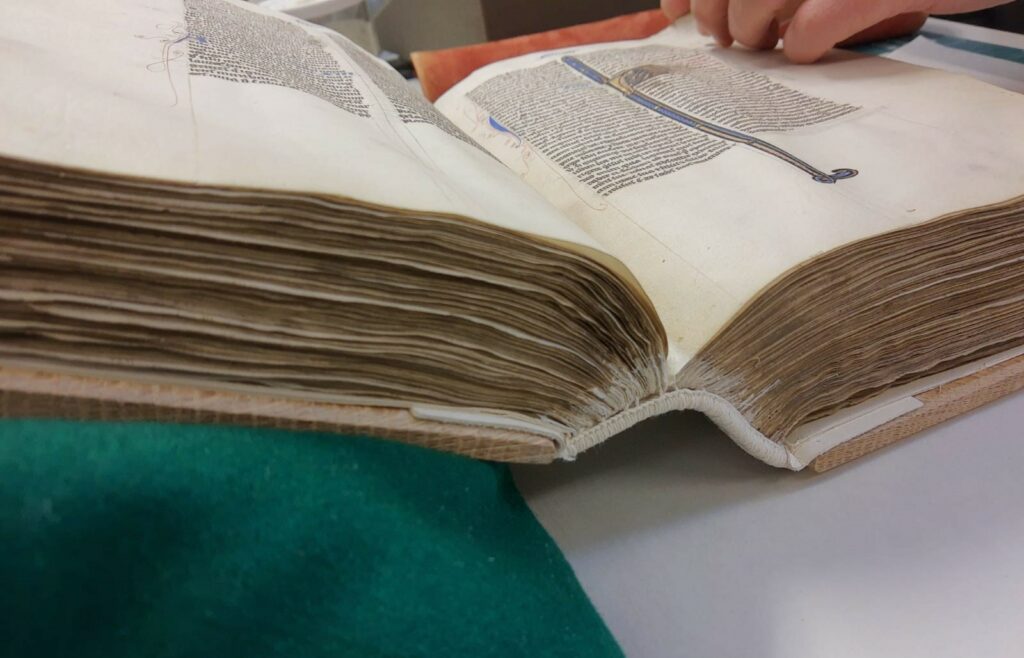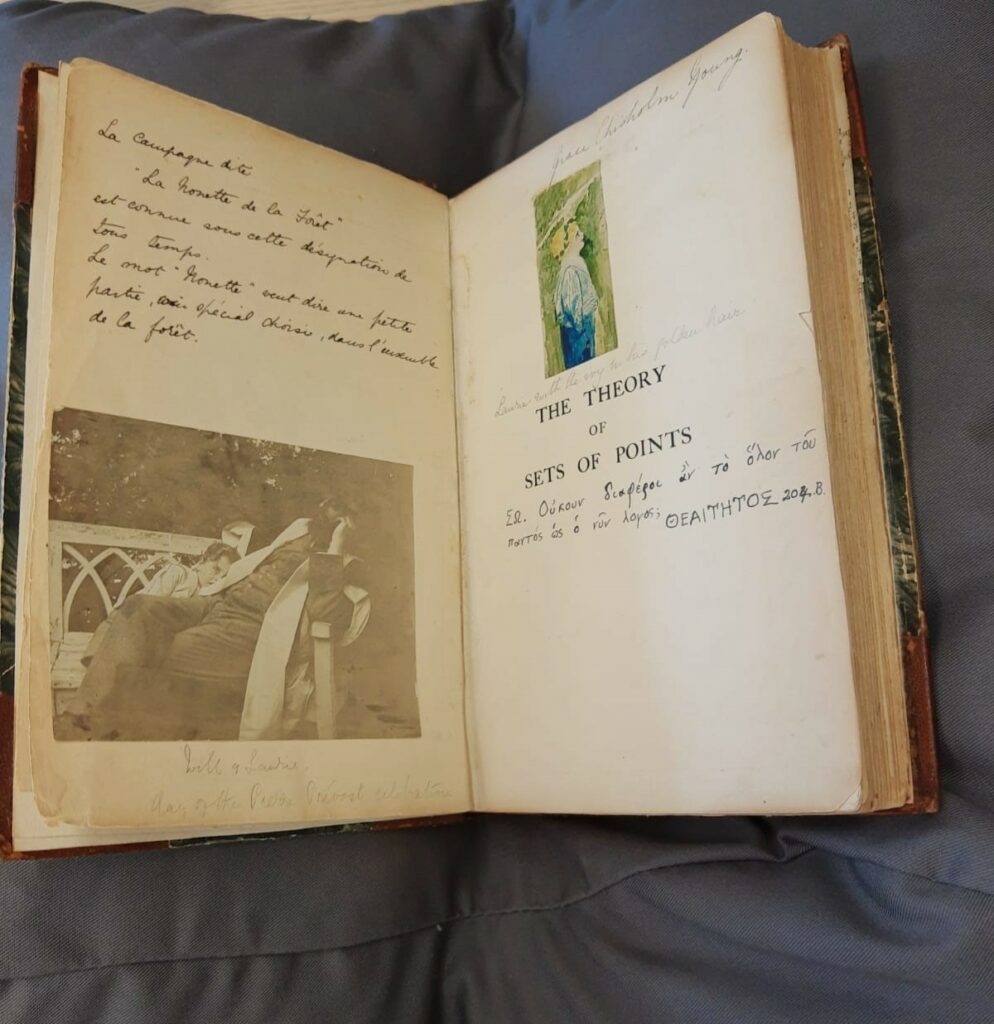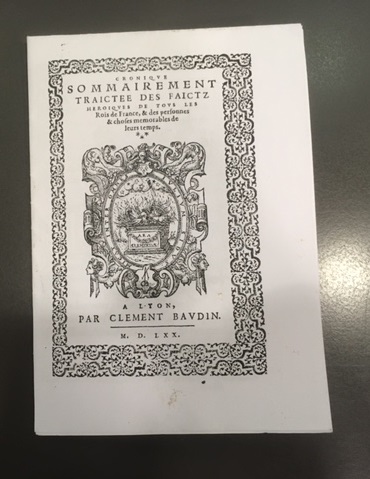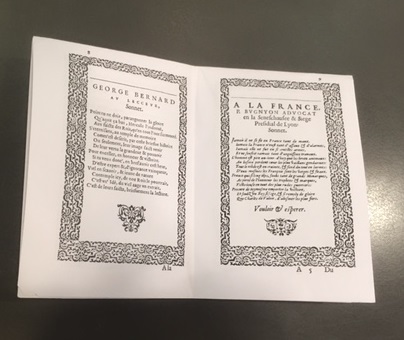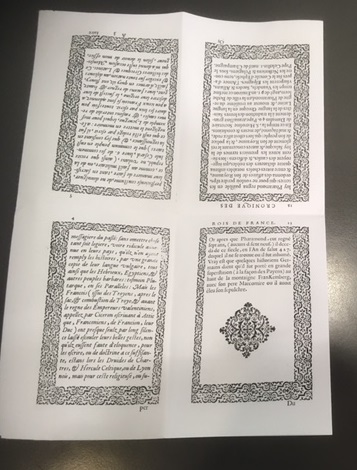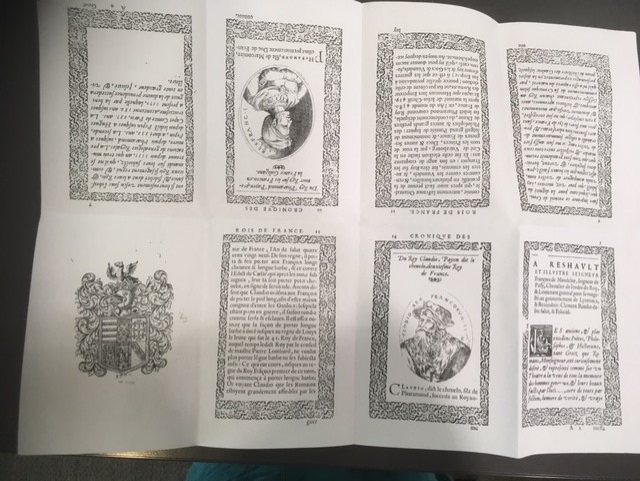And another tour rolls around…
Another month, and another tour, to Queen’s College old library. Its claim-to-fame being the oldest library in Cambridge. Emma, our grad trainee, and the library staff at Queens College gave us a tour with a hands-on historical workshop. We looked through texts that varied between the 1500s and 1700s. Have a hankering for library tour posts? Check out Lauren, Jess & D’s experiences of The UL Tour. Or Lucy’s Cambridge Central Library post. I promise you won’t regret.
Queens College
One thing I love about the college libraries is that each college has its own distinctive characteristics. Katie’s post on Newnham College library tour will give you a flavour. Queens College is certainly distinctive. Across the mathematical bridge (remove the screws and the bridge would remain) span beautiful buildings and lush gardens. The architecture was a mix of “old country town” and “modern build”. But the nicest thing was, every person I saw was smiling. Queens is one of the smaller colleges in Cambridge, built of just over 1000 undergraduates, graduates and academics. Nonetheless, the college is utterly charming and quirky. I felt a lovely sense of community, even just walking through!
The collection
The main library is fairly modern and bright.. and busy! It was the end of term. And we heard nothing but ferocious keyboard clicking from students getting essays in. Because Queens caters for first year undergraduates of all subjects, it has few books that cater for other years. As a grad trainee working in departmental libraries, this is a major difference between our collections. As our collections are tripos-based, we cater from undergraduate to fellow. Our collections are based soley around one tripos.
Bliss Classification scheme
Queens use the bliss classification system. Bliss builds classmarks through a combination of letters and numbers. The alternative is a numerical-based system like Dewy. We call the former a faceted scheme whilst the latter an enumerative scheme. Whilst it’s possible to have a system that is in-part enumerative and faceted. Bliss is fully faceted. Faceted schemes allow for in-depth subject analysis, aswell as freedom and flexibility for the classifier. This is because they build their classmarks rather than pick from a list. Therefore it’s easier to show links between subjects, accommodate new subjects. With enumerative schemes, subject headings are already
As libraries strive to be more inclusive and accommodating, faceting elements can prove to be desirable in schemes. This is because of the hospitable element, made possible by the classmarking system. It helps to endorse and embraces new subjects that sprout, and ones that arise from existing subjects.
The old library
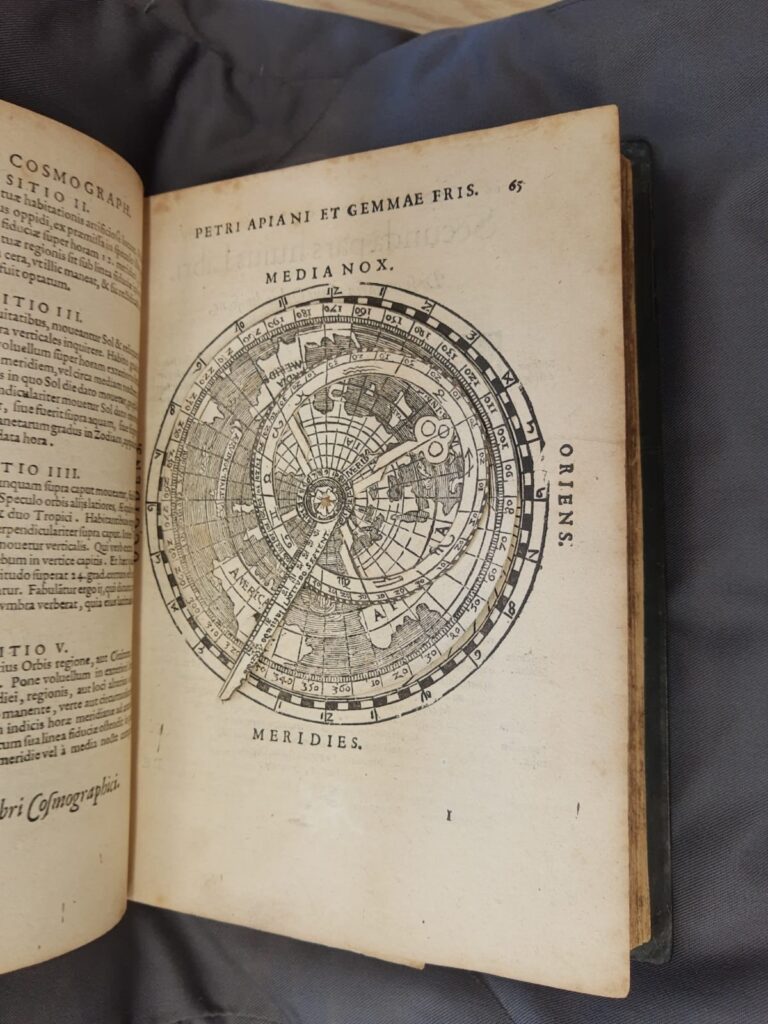
Some of the old books kept in Queens College old library. 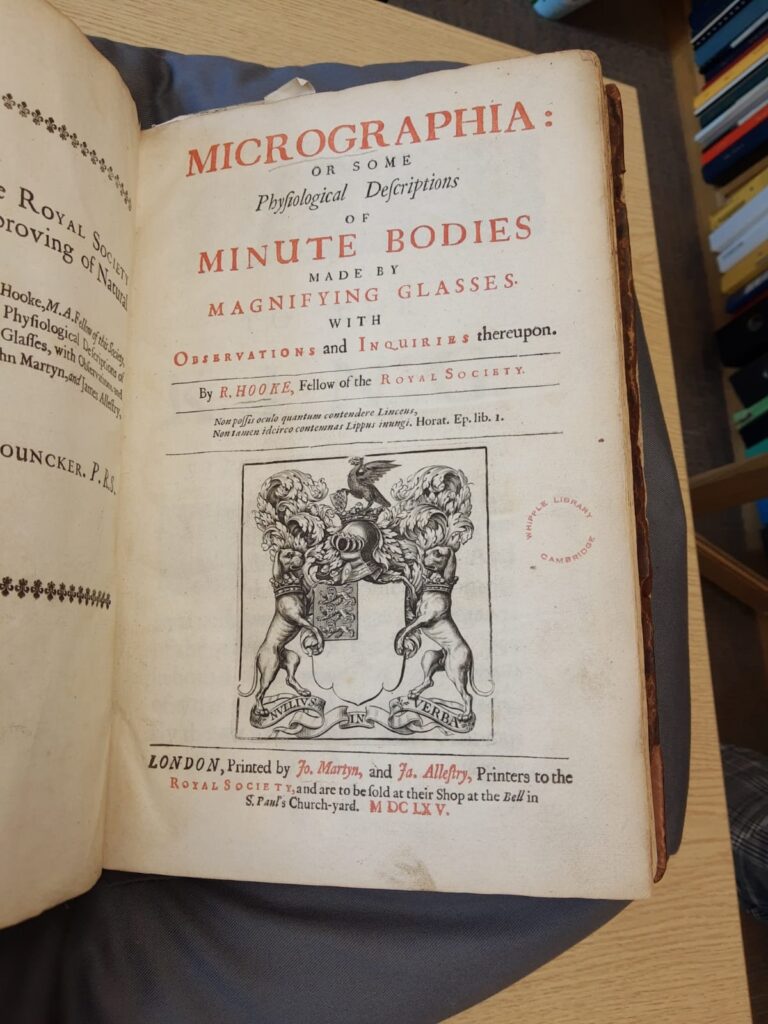
The ability to use two different colours for ink indicates wealth.
“Queens College old library is the “Elmer-the-elephant” of libraries. From 12th Century Windows, to 17th Century wooden safe. It was a beautiful mesh of time periods”
The trainees were taken through to Queens College old library, which was like stepping through an architectural time capsule. It featured the most aesthetic walls, ceilings and furniture from across different time periods. Queens College old library is the “Elmer the elephant” of old libraries. From 12th century windows, to a 17th century wooden safe, it was a beautiful mesh of time periods. The top half of the shelves were from a different century to the medieval bottom half of the shelves! And there were modern spinny desk chairs dotted around too. The mismatched museum of vintage library furniture made Queens College old library more charming.

Towering above us were shelves of old books. They were beautiful and unique. Meanwhile Emma talked us through how she catalogues these books. Broadly speaking, this involves; subject analysis, publishing information, a physical description and classification. If you’re after an idea of cataloguing, Lucy’s blogpost on cataloguing training is a great start.
The history of the printing press
The trainees were then given a 101 on the history of the printing press. I’ll keep this brief – I’ve left a further reading list at the end of this post. But, the compositor would have to manually select the type from his case. Then, set this onto the composing stick. And as you can see in the image below, the composition stick is composed letter-by-letter. And, the individual characters would have to slot onto a stick corresponding to a line of text. Each stick (line) would then accumulate to create a page of writing.
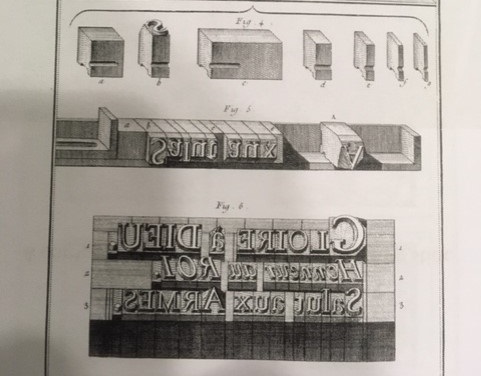
Once the page was complete, the ability to rewrite or edit a sentence became impossible. This is unlike modern times, where the touch of the button can easily rewrite words and sentences.
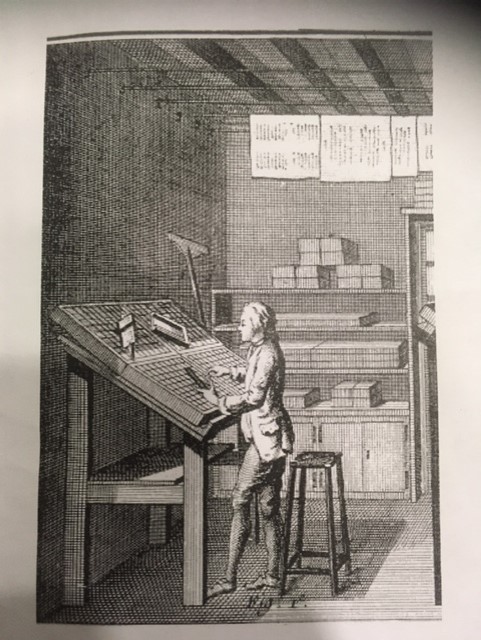
We also learnt about imposition. Now, imposition (in terms of books) is the way the pages are laid out. When folded, the pages appear in the correct order. The below image is an example of imposition. After printing the page, people would have to fold the sheet in the correct order.
Old book workshop
We were handed books ranging from 15-17th century. For me, a French book from the 15th Century on the French revolution. The book contained three forms of handwritten notes and, suggested it had been rebound at least once in its lifetime. One of the handwritings seemed scrawny, child-like in nature. We thought that a child aged 7-10 could be behind these notes. We concluded that the book was used for school. It was fascinating to see children’s notes from centuries ago. Handwriting is personal to the individual, and these have been frozen in time.
Finally, a bit of show-and-tell. The grads got to grips with miniature books from the 18th century. Roughly 3cm by 4cm, these dinky books were usually ye old testaments. And whilst they were not practical, they were very cute!
Thank you Queens!
Overall, it was a fascinating visit and I certainly thouroughly enjoyed it. The tour of Queens I want to say a big thank you to the Library staff at Queens for making the visit possible. And, for taking time out of the day to provide us with this workshop. A special thanks to Emma for giving us an informative tour of the college grounds and library.
Further Reading:
General Book History
Robert Darnton, ‘What is the History of the book?’ Daedalus, 111 (1982), 65-83 David Pearson, Books as history. The importance of books behong their texts (Newcastle, DE: Oak Knoll; and London: British Library 2008) Sarah Werner, Studying early printed books, 1450-1800: a practical Guide (Hooken, NJ: Wiley Blackwell, 2019)
Printing History
Phillip Gaskell, A new introduction to bibliography (Oxford: Claredon Press, 1972) Joesph Mocon, Mechanick exercises; or, THe docterine of handy-workd. Applied to the art of printing (London: Joesphy Moxon, 1683)

